Legio I Minervia
Legio I Minervia: one of the Roman legions. Its name signifies that it received special protection form the goddess Minerva.
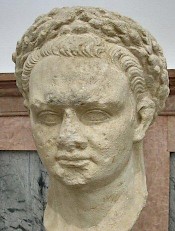
According to the Greco-Roman historian Cassius Dio, the First legion Minervia was founded by the emperor Domitian.note Year and month are unknown, but 82 is very likely, because in the next spring, Domitian launched a full-scale war against the Germanic Chatti. Although there is no evidence to support this hypothesis, it is very tempting to connect the recruitment of this legion with the transfer of XXI Rapax from Bonna (modern Bonn) to Mogontiacum (Mainz) in 83.
The new legion was stationed in Bonn in the province of Germania Inferior, a day's march south of the capital of Germania Inferior, Cologne. The legion's full name seems to have been I Flavia Minervia: Flavia being the family name of Domitian, Minerva being his favorite deity. According to coins from the third century, the emblem was a statue of this warrior goddess. Another emblem was the Capricorn, the sign of the zodiac that is ruled by Minerva.
Soon after its foundation, it received a new name. In 89 the governor of Germania Superior, Lucius Antonius Saturninus, revolted, and the army of Germania Inferior (I Minervia, VI Victrix, X Gemina, XXII Primigenia) hurried to the south, to Mainz, and defeated the rebel. Every legion was awarded the title Pia Fidelis Domitiana ("faithful and loyal to Domitian"). When this emperor was killed in 96, the last element of this honorific title was dropped, and the name Flavia as well. From now on, the legion's full name was I Minervia Pia Fidelis.
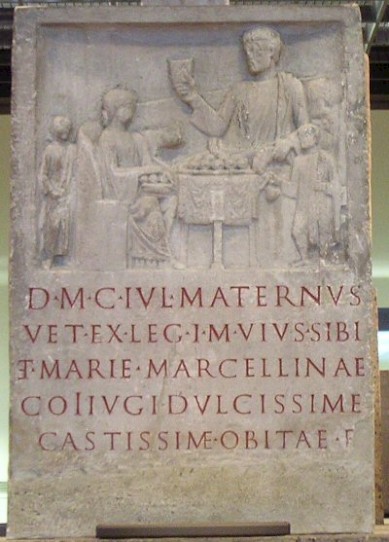
During the reign of Trajan, it fought against the Dacians (101-106). One inscription suggests that it was part of a task force with VI Victrix and X Gemina from Neuss and Nijmegen. In the final years of the war, I Minervia was commanded by the future emperor Hadrian. The legion's emblem can be seen on the famous column of Trajan in Rome, the victory monument that was erected after Dacia had been conquered. The legion returned to the Rhine when the war was over, because its (anonymous) commander is known to have been in Germania Inferior in the year 112.
The Greek geographer Ptolemy of Alexandria makes an interesting remark in his description of the earth. He mentions "Bonn of the first Minervian legion". Like so many cities, Bonn had become an important civil settlement because of the presence of a large military unit. Other examples from this period are Léon in Hispania Tarraconensis, which is derived of the word "legion", and Xanten, which was simply called "the thirtieth", after XXX Ulpia Victrix.
XXX Ulpia Victrix, founded in 105 by the emperor Trajan, became I Minervia's twin legion. The two units often operated together. Inscriptions from the Dutch river area prove that they sometimes worked jointly at building projects, and several inscriptions simply mention "the army of Germania Inferior" (exercitus Germanicus Inferior, frequently abbreviated as EXGERINF).
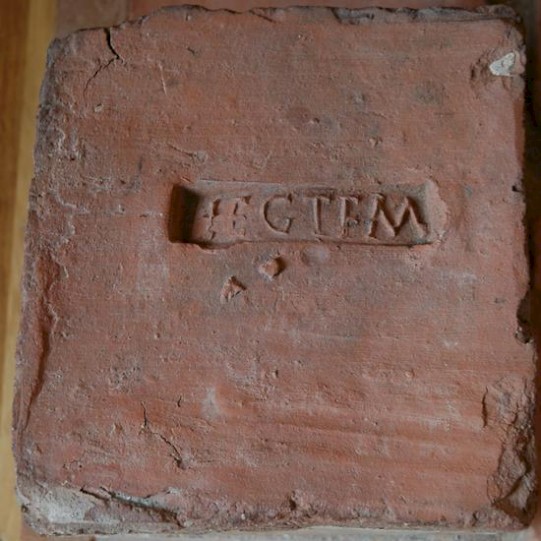
Because Bonn is close to Cologne, it comes as no surprise that many soldiers served in the capital of Germania Inferior. Several inscriptions attest to their activities. Many legionaries had military duties, like the centurion who was responsible for the garrison of Divitia (Deutz), the castle on the east bank of the Rhine. A few men were beneficarii, which means that an officer (or the governor) had released them of their ordinary duties and given them a special, usually bureaucratic task. They could be send to several parts of Germania Inferior, and at least one of them is known to have visited the Cananefates, who lived near the mouth of the Rhine at Voorburg.
Subunits of the First Minervian legion served in stone quarries, which is interesting because this activity was usually reserved for slaves. Another subunit is known to have built a lime kiln in the Eifel mountains. These activities were certainly not uncommon, but it is remarkable that the legionaries of I Minervia served as laborers so frequently. Their fellow-soldiers of XXX Ulpia Victrix are more often found in bureaucratic tasks. It is tempting to see a division of labor, especially since other kilns of I Minervia can be localized near Nijmegen, which is close to Xanten and far from Bonn. On the other hand, our impression that labor was divided between the two legions may be accidental.
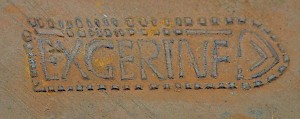
Sometimes, subunits were send overseas. Perhaps to Britain, certainly to Mauretania. During the reign of Lucius Verus, the entire legion I Minervia served in the campaign against the Parthian empire (162-166); to strengthen this unit, soldiers of XXX Ulpia Victrix were added. One inscription states that a subunit fought in the regions of the Caucasus and in Albania near the Caspian Sea.
Bonn, however, remained the base of this legion until the beginning of the third century. According to the column of Marcus Aurelius, subunits were involved in the wars against the Marcomanni (165-175 and 178-180). Other subunits may have taken part in the campaign of the governor of Gallia Belgica, Didius Julianus, against the Chauci in 173.

In 193, civil war broke out in the Roman empire. The First Minervian legion immediately sided with Lucius Septimius Severus, which was certainly courageous because another pretender, Clodius Albinus, was closer at hand. In 196/197, the legion was involved in the actual fighting between these two men. Severus was victorious and must have rewarded the soldiers, but we do not know how.
During his reign (198-211), subunits of the two legions of the EXGERINF and the two legions of Germania Superior (VIII Augusta and XXII Primigenia) served as garrison of Lyon, the capital of the three Gallic provinces.
Somewhere between 211 and 222, the legion received the surname Antoniniana, which was the name of two emperors: Caracalla (211-217) and Heliogabalus (218-222). The second candidate is more plausible, because the surname appears to have been dropped when he was assassinated. On an altar dedicated in 231, the legion is called I Minervia Pia Fidelis Severiana Alexandriana, which proves that the emperor Severus Alexander owed something to this unit.
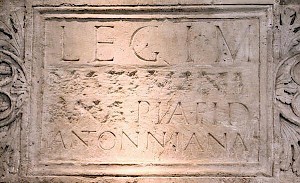
Severus Alexander was killed in 235 and succeeded by Maximinus Thrax. Probably, the First played a role during the succession, because it was now known as I Minervia Maximiniana Pia Fidelis Antoniniana. In other words, the surname Antoniniana was again used and the title Maximiniana was added. It was dropped when Maximinus was killed in 238.
The legion must have taken part in the civil wars of the third century and is known to have been loyal to the Gallic Empire, which existed between 260 and 274. An inscription from Sirmium proves that a subunit was in that city in about 260.
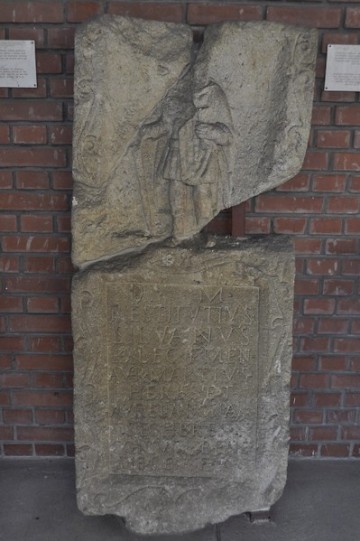
In the fourth century, the First Minervian legion was still at Bonn. In 351/353, it was defeated by the Franks (Bonn was destroyed) but it returned a few years later, when general Julian (the future emperor) restored the Rhine frontier. At that moment, there was another unit with the same name, but this was part of the mobile forces, and not stationed near the Rhine.
Literature
- W. Eck, "Die legio I Minervia. Militärische und zivile Aspekte ihrer Geschichte im 3. Jh. n.Chr.", in: Yann Le Bohec, Les légions de Rome sous le Haut-Empire (2000 Lyon) 87-93
- Y. Le Bohec, "Legio I Mineruia (Ier-IIe siècles)", in: Yann Le Bohec, Les légions de Rome sous le Haut-Empire (2000 Lyon) 83-85